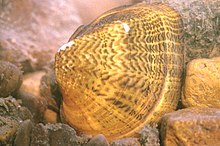
The redeye bass, redeye, or Coosa bass is a species of freshwater fish in the sunfish family (Centrarchidae) native to the Coosa River system of Georgia, Alabama. The waters it is normally found in are cool streams and rivers in the foothills of mountains.

The white crappie is a freshwater fish found in North America, one of the two species of crappies. Alternate common names for the species include goldring, silver perch, white perch and sac-a-lait. USS Goldring is named for the fish. The genus name Pomoxis refers to crappies' sharp operculum, while the species name annularis means 'having rings', i.e., it has vaguely vertical bars on the body.

The sauger is a freshwater perciform fish of the family Percidae that resembles its close relative, the walleye. The species is a member of the largest vertebrate order, the Perciformes. It is the most migratory percid species in North America. Saugers have two dorsal fins; the first is spiny and the posterior dorsal fin is soft-rayed. Their paired fins are in the thoracic position and their caudal fin is truncated, which means squared off at the corners, a characteristic of the family Percidae. Another physical characteristic of saugers is their ctenoid scales, which are common in advanced fishes. Saugers have a fusiform body structure, and as a result are well adapted predatory fishes and are capable of swimming into fast currents with minimal drag on their bodies. They may be distinguished from walleyes by the distinctly spotted dorsal fin, by the lack of a white splotch on the caudal fin, by the rough skin over their gills, and by their generally more brassy color, or darker color in some regions. The typical sauger is 300 to 400 g in weight.

NatureServe, Inc. is a non-profit organization based in Arlington County, Virginia, US, that provides proprietary wildlife conservation-related data, tools, and services to private and government clients, partner organizations, and the public. NatureServe reports being "headquartered in Arlington, Virginia, with regional offices in four U.S. locations and in Canada." In calendar year 2011 they reported having 86 employees, 6 volunteers, and 15 independent officers.
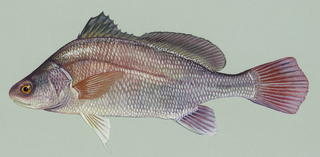
The freshwater drum, Aplodinotus grunniens, is a fish endemic to North and Central America. It is the only species in the genus Aplodinotus, and is a member of the family Sciaenidae. It is the only North American member of the group that inhabits freshwater for its entire life. Its generic name, Aplodinotus, comes from Greek meaning "single back", and the specific epithet, grunniens, comes from a Latin word meaning "grunting". It is given to it because of the grunting noise that mature males make. This noise comes from a special set of muscles within the body cavity that vibrate against the swim bladder. The purpose of the grunting is unknown, but due to it being present in only mature males and during the spawning season, it is assumed to be linked to spawning.

The northern riffleshell is a subspecies of freshwater mussel, an aquatic bivalve mollusk in the family Unionidae, the river mussels. This mussel is endangered and federally protected. It was proposed as a species, Epioblasma rangiana, by Williams et al. (2017).

The fallfish is a North American freshwater fish, a chub in the family Cyprinidae. The fallfish is the largest minnow species native to Eastern North America.

The Roanoke logperch is a species of freshwater ray-finned fish, a darter from the subfamily Etheostomatinae, part of the family Percidae, which also contains the perches, ruffes and pikeperches. It is found in the Roanoke and Chowan drainages in Virginia and North Carolina in the United States. They inhabit low and moderate-gradient streams and rivers in warm, clear water in mostly unsilted gravel and rubble in runs, pools, and riffles. They are primarily insectivorous. This fish is a federally listed endangered species.
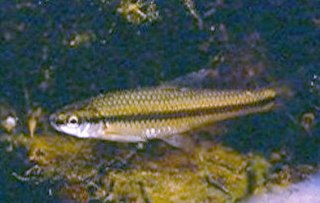
The Cape Fear shiner is a North American species of freshwater fish in the family Cyprinidae. It is endemic to the central part of the state of North Carolina in the southeastern United States, and is only found in the shallow streams of the Cape Fear River basin. The fish is small and yellow with black lips and a black stripe that runs down the middle of the fish's side. This shiner is normally found in mixed schools with other minnow species. It is unique amongst its genus because it has elongated intestines that are specifically adapted to a primarily herbivorous diet. It can breed twice a year and normally lives for only two or three years in the wild. The males and females are normally similar in appearance but become different colors in the spawning season. This species of shiner was not discovered until 1962.

Epioblasma turgidula, the turgid blossom pearly mussel, turgid riffle shell, turgid-blossom naiad or turgid blossom, was a species of freshwater mussel, a mollusk in the family Unionidae. It is now likely extinct.

The Louisiana pearlshell, Margaritifera hembeli, is a rare species of bivalve mollusk in the family Margaritiferidae. This freshwater mussel is native to Louisiana in the United States, and was previously present also in Arkansas. It grows to a length of about 10 cm (4 in) and lives on the sand or gravel stream-bed in riffles and fast flowing stretches of small streams. Its life cycle involves a stage where it lives parasitically inside a fish. This mollusk is sensitive to increased sedimentation and cannot tolerate impoundments. Because of its limited range and its population decline, the International Union for Conservation of Nature has rated this mollusk as being "critically endangered".

Obovaria olivaria is a species of freshwater mussel, an aquatic bivalve mollusk in the family Unionidae, the river mussels. It is commonly referred to as hickorynut.
The round ebonyshell is a species of freshwater mussel, an aquatic bivalve mollusk.
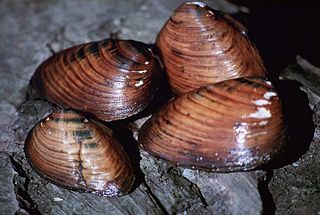
Pleurobema clava, the clubshell, club naiad or clubshell pearly mussel, is a species of freshwater mussel, an aquatic bivalve mollusk in the family Unionidae, the river mussels.
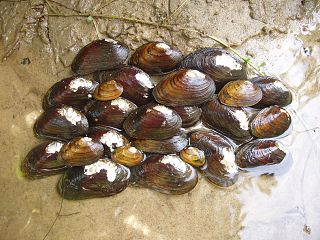
The James River spinymussel, also known as the Virginia spinymussel, is a species of freshwater mussel in the family Unionidae, the river mussels. This species is native to North Carolina, Virginia, and West Virginia in the United States. It is a federally listed endangered species of the United States. In 2017, Perkins, Johnson & Gangloff placed the species into a new genus Pavaspina on account of genetic data and its lateral spines.
Pleurobema marshalli, the flat pigtoe or Marshall's mussel, was a species of freshwater mussel in the family Unionidae, the river mussels. It was native to Alabama and Mississippi, but it has not been seen since 1980. Though it is still listed as critically endangered on the IUCN Red List and as an endangered species on the US Endangered Species List, it is likely extinct.

Epioblasma triquetra, common name the snuffbox mussel, is a species of freshwater mussel, a mollusk in the family Unionidae. It is native to eastern North America, where it is a listed as an endangered species in both Canada and the United States.

The blueback herring, blueback shad, or summer shad is an anadromous species of herring from the east coast of North America, with a range from Nova Scotia to Florida. Blueback herring form schools and are believed to migrate offshore to overwinter near the bottom.

The popeye shiner is a North American species of freshwater cyprinid fish.

Epioblasma obliquata, commonly called the catspaw, is a species of freshwater mussel. It is native to eastern North America, where it is classified as endangered under the Endangered Species Act. There are two subspecies, each with distinct morphology. Due to species rarity, the behavior of this organism is unknown beyond general freshwater mussel behavior.
